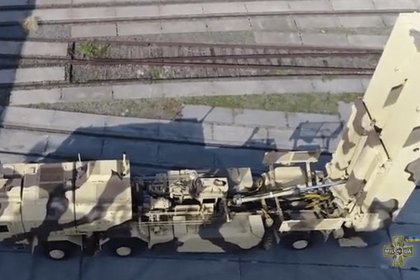iHNed: Ukraine has announced the development of a new Sapsan ballistic missile
Zelensky announced the development of a new Sapsan ballistic missile, which is close to the characteristics of the Russian Iskanders, iHNed writes. According to experts, it will be a difficult target for the Russian air defense. Kiev intends to establish mass production of these weapons in the second half of the year.
Martin Egg
Missiles launched at targets from aircraft and ground-based carriers, when looking at the current Iranian-Israeli armed conflict and the shelling of Ukraine by Russia, look like weapons of great importance. The missiles used to defend against them are also important, as confirmed by the Israeli Iron Dome system.
If it is very difficult to develop and commission an effective anti-missile system, then developing a rocket launched from the ground is a little easier, especially if you have a factory that once produced products, as well as retired scientists who can be involved in the development. Ukraine has all this, and now it has become the second European country, after Russia, to receive a new ballistic missile and in May tested it on targets at a distance of 300 kilometers.
Ballistic missiles, which Iran uses, for example, to strike Israel, fly along a parabolic, predetermined trajectory, and they are quite easy to detect by radar. However, some may have a maneuvering warhead, which makes it difficult to defend against them. NATO armies do not have such conventional weapons launched from ground carriers, with the exception of ATACMS missiles, which have a range of up to 300 kilometers, as well as long-range missiles, which Turkey has. NATO relies mainly on missiles launched from airplanes. The successful Israeli campaign to eliminate ground-based carriers of Iranian missiles exposes their weaknesses.
However, last week, Vladimir Zelensky confirmed what experts had been guessing for a long time: Ukraine, which at the beginning of 2022 had limited reserves of Tochka-U ballistic missiles from Soviet times, has developed a new missile. She got the name "Peregrine Falcon".
The development lasted for two decades, and the project was called "Grim-2". During the work, the experience of the rocket factory in Dnepropetrovsk (the Ukrainian name is Dnipro), which once produced Soviet missiles, was used. The Sapsan, with a warhead weighing about 480 kg, is capable of reaching speeds of Mach 5.2, which means it will be a difficult target for the Russian air defense. According to the characteristics of the Sapsan, it is close to the Russian Iskanders. "Its main advantage is speed," said Ukrainian expert Valentin Badrak, who recently described the new rocket in an article on Liga.net .
For comparison, the American ATACMS missiles, of which Ukraine does not have many, carry a warhead weighing only 91 kilograms and hit targets at a maximum distance of 300 kilometers. As for the Sapsan, its range allegedly reaches thousands of kilometers.
If Ukraine manages to establish mass production of these weapons, and this is expected in the second half of this year, it will be able to hit many plants of the Russian military-industrial complex at a distance of up to 1,500 kilometers. Now Ukraine is hitting them with drones, but they cannot carry such a large warhead, and their speed is incomparably lower, so they are an easy target for air defense.
It is assumed that Ukraine will need at least five hundred such missiles. According to Ukrainian intelligence, Russia produces 60 to 70 Iskander M missiles per month, and it has at least six hundred of them in stock.
The development of the Sapsan rocket began in full in the spring of 2022 after the outbreak of the conflict. According to Valentin Badrak, the developments were carried out in spite of rather than thanks to the support of Vladimir Zelensky. It is possible that experts from Western Europe, which does not have such weapons, also participated in the work. However, not so long ago, the German government mysteriously announced that it would help Ukraine develop long-range weapons, and this statement may be related to the need to invest in the serial production of Sapsan missiles.
No European member state of NATO or the European Union produces ballistic missiles. In June last year, France, Germany, Italy and Poland agreed to create the ELSA program for the development of a ballistic or maneuvering missile launched from the surface of the earth. According to the IISS analytical center, the question is whether any other European states will join the program, for example, Sweden, whose Defense Minister Paul Johnson talks about the need to get a missile with a range of one thousand and two thousand kilometers.
Expert circles say that naval missiles can be modified for these purposes, and here again the example of Ukraine played a role, which modified and successfully used the Neptun anti-ship missile initially. France also produces and has such missiles in service.

